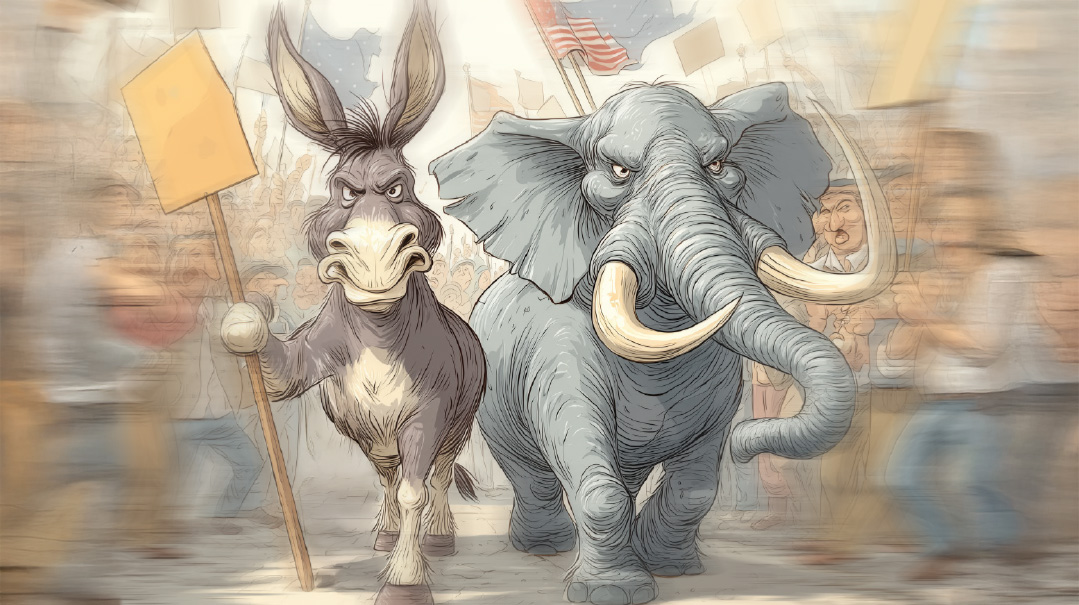The Death Knell of Affirmative Action?

Numerous elite institutions are busy seeking ways to circumvent the anticipated Supreme Court decision
T
hough the Supreme Court will not publish its decision in two suits brought by the Students For Fair Admissions (SFFA), an Asian-American advocacy group, against Harvard University and the University of North Carolina until next June, it is widely expected that the Court will follow the dictum of Chief Justice Roberts, in an earlier affirmative action case: “The way to stop discriminating on the basis of race is to stop discriminating on the basis of race.”
In doing so, the Court will be faithfully reading the plain statutory language of Title VI of the Civil Rights Act of 1964: “No person in the United States shall, on the ground of race, color, or national origin, be excluded from participation, be denied the benefits of, or be subjected to discrimination under any program receiving Federal financial assistance.” That itself constitutes a powerful restatement of the foundational principle of the Declaration of Independence — “All men are created equal,” and as such imbued by their Creator, as individuals, with certain inalienable rights. The more that principle is emphasized, the closer we are to realization of Martin Luther King’s dream of an America in which his four brown children would be “judged not by the color of their skin but by the content of their character.”
Judging people as individuals, and not just as members of categories determined at birth, is a value supported by an overwhelming majority of Americans. Seventy-four percent, according to a recent PEW survey, oppose the use of racial categories in college admissions, including nearly three-fifths of blacks and 68% of Hispanics.
Nevertheless, numerous elite institutions are busy seeking ways to circumvent the anticipated Supreme Court decision. They may not be as open about their intentions as Governor Orville Faubus standing at the door of a Little Rock school in 1957 to prevent black children from entering, after Brown v. Board of Education, but they are equally intent on ignoring the Supreme Court’s directives.
Already, a number of leading law schools, including number-one-ranked Yale, have announced that they are withdrawing from US News and World Report’s annual rankings. That move is likely a prelude to dropping the use of objective test scores — i.e., the LSAT — in the admissions process, so as to make it harder to detect blatant discrimination against Asian and white applicants. Yet it is precisely those objective tests — SATs, GREs, MCATs, and LSATs — that have been the stepping stones to a top-level education for many poorer students who come from high schools or colleges unknown to the admissions offices of elite colleges or graduate schools.
EVER SINCE Bakke v. Board of Regents (1978), the slender reed propping up Supreme Court jurisprudence on affirmative action against challenges under the 14th Amendment’s equal protection clause, in the case of state institutions, or under Title VI, for private institutions receiving federal funds, has been the claimed interest in ensuring the benefits of a diverse educational environment. Yet the evidence of that compelling interest, at least as applied to racial or ethnic diversity, is virtually nonexistent, and the parameters of what constitutes a sufficiently diverse educational environment unclear, as Justice Thomas kept reiterating in his questioning during oral argument.
Yet it is crucial to establish those parameters, for even if there were some compelling state interest for violating the 14th Amendment’s promise of equal treatment regardless of race, and by extension the similar promise of Title VI, the state or private actors, under traditional 14th Amendment analysis, would have to choose the path least violative of the principle of non-discrimination.
But strangely, the “diverse mix” sought by institutions like Harvard always seems to come out close to the percentage of the general population of the favored racial group. That suggests that what is really going on is an application of the principle of “equity,” i.e., that favored groups must be represented according to their percentage of the population. In other words, quotas — which the Court explicitly banned in Bakke — by another name.
Even on its own terms, the claim that the educational benefits of diversity justify favored racial categories grows weaker by the day for three reasons. First, there is abundant evidence that affirmative action, rather than fostering a diverse educational environment, has led to a form of resegregation. Minority students admitted under reduced academic standards often fare far less well than they would in an educational environment for which they were better prepared.
Black economist Thomas Sowell, who taught at Cornell University during the black student takeover of the president’s office in 1968, for instance, noted that half of the black students were on academic probation. Yet they were highly qualified for college, with average SAT scores that placed them in the 75th percentile. The only problem was that the average Cornell student ranked in the 90th percentile or higher. The result was bitterness and rage.
That “mismatch” of preparedness for elite education results in minority STEM students dropping out disproportionately and nursing their psychic wounds in the company of those similarly wounded. Thus the ubiquitous “black table” in student dining halls, which I remember even in my college days over 50 years ago, and recurrent demands for racially segregated dorms and safe spaces, even separate graduation ceremonies. Underprepared black students tend to congregate in certain academic departments, like Black Studies, which will do little to prepare them for life after college.
Today, at least in part due to affirmative discrimination, there is a Black Harvard and a White and Asian Harvard. Peter Wood and Dionne Pierre of the National Association of Scholars have written an entire book called Neo-Segregation at Yale (2019). That neo-segregation is the ultimate rebuttal of the claimed diversity benefit.
The second weakness of the diversity argument is that those minority students admitted under affirmative action programs tend not to be that diverse from their campus peers: They are drawn, almost exclusively, from the same upper class schools and backgrounds as their white classmates. (Ivy League campuses tend to be playgrounds for the well-to-do.) As Heather Mac Donald of the Manhattan Institute puts it, “It is not ‘different circumstances’ that Harvard seeks, but different skin color.”
Were that not the case, Harvard would be actively pursuing economically disadvantaged students, who are far less likely to apply to Harvard than their more affluent peers, with the same grades and test scores. And giving weight to those applicants would have another big advantage over merely privileging skin color: Overcoming economic adversity speaks to the individual character of the applicant; skin color does not.
The third reason for treating the claimed benefits of racial diversity with great skepticism is that its proponents obviously don’t believe a word of what they say. If they did, they would be actively promoting exposure viewpoint diversity — incidentally, the only type of diversity for which there is solid evidence of educational benefit.
Instead, elite universities are becoming ever more self-contained echo chambers. Harvey Mansfield, 90, is the only “out” conservative professor at Harvard. Less than half of Harvard students say they would be comfortable expressing a dissenting view in class.
The hysteria over Elon Musk’s purchase of Twitter demonstrates how adamant the progressive elite is that their narrative should not be challenged by opposing views. Diversity, Equity, and Inclusion officials, the foremost proponents of affirmative action, have seized control of academic hiring at many of the country’s top universities, with the authority to throw out applications for academic positions that don’t show the proper commitment to the form of racial diversity being promoted. At Berkeley, for instance, 75 percent of applicants for positions in the Life Sciences were thrown out at the DEI pre-screening stage. The final applicant pool, after pre-screening, included 59 percent Hispanics, even though Hispanics comprised only 14 percent of the applicants, and 14 percent whites.
So much for the “benefits of diversity” argument.
The final reason, however, that Harvard should lose in the Supreme Court is that favoritism to one racial or ethnic group inevitably requires disfavoring others, in Harvard’s case specifically Asians, themselves a traditionally oppressed minority. An Asian applicant with the same test scores and grades as a black student has a negligible chance of admission.
Harvard employs blatant racial stereotyping to keep the Asian percentage of the class down. Asian candidates are systematically rated lower on “personal characteristics,” as dull, grinds, even where they have stellar extracurricular activities and outstanding alumni interviews. All part of Harvard’s “holistic” admissions process, and reminiscent of the same technique employed by Harvard a hundred years ago to make sure the percentage of Jews did not grow too high. “Lacking the qualities of a gentleman” was the catchword then.
It is hard to imagine a greater affront to laws meant to ban discrimination than such racial stereotyping.
(Originally featured in Mishpacha, Issue 939. Yonoson Rosenblum may be contacted directly at rosenblum@mishpacha.com)
Oops! We could not locate your form.







